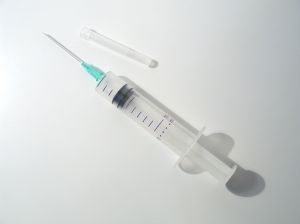 Hyaluronic Acid as a dermal filler
Hyaluronic Acid as a dermal filler
The benefits of hyaluronic acid as a dermal filler are fairly clear. This interesting molecule, called a glycosaminoglycan (think sugar combined with a protein), is a natural part of the skin.
Hyaluronic acid gives the skin structural support by holding collagen, elastin, and other skin proteins together. What that means for the face is that hyaluronic acid can provide fullness and form.
Hyaluronic acid also has the interesting ability to draw water to it. That means that if it is injected into the face as a dermal filler, it can hydrate and moisturize the face from within. Moisturizing the skin from within the skin is the goal of many cosmetics and most, if not all, fail at this task.
There have been three stumbling blocks to hyaluronic acid dermal fillers that have kept them from being even more popular. First, early users of hyaluronic acid fillers report that the injection is more painful than some other types of dermal fillers. This is because initial preparations of hyaluronic acid did not contain a local anesthetic.
Second, because of the way that the hyaluronic acid filler was made, older versions often required an allergy test to determine if the patient was allergic to the compound. This added time and expense to the procedure. Third, when patients compared various dermal fillers, they decided to spend their money on one that lasts a little longer than hyaluronic acid.
Captique as a solution
Captique provides a solution to all three of these issues because of one tiny difference that sets it apart from other hyaluronic acid dermal fillers—a very tiny difference. Captique is produced by genetically modified bacteria. Unlike other fillers that are purified from animal sources, Captique comes from bacteria whose sole purpose is to pump out hyaluronic acid.
Why is the source of Captique important? First, because the molecule is produced from bacteria, the potential for an allergic reaction in the body is essentially zero. That means that patients do not need to go through allergy testing before being treated with Captique. Also, since the bacteria are genetically designed to produce hyaluronic acid, the structure of the hyaluronic acid can be controlled. Scientists have modified the bacteria to create a highly cross-linked hyaluronic acid. More cross-links in hyaluronic acid molecules means that the body has a harder time breaking it down. That means that Captique lasts longer than other dermal fillers, about six to nine months.
Since Captique is a new hyaluronic acid dermal filler, it was approved by the FDA to be mixed and combined with lidocaine, a local anesthetic. This advance means that the Captique injection is a less painful experience than other hyaluronic acid injections. The lidocaine numbs the face as it is injected.
The primary complication with Captique is that the results are not always exactly what the patient expects. Fortunately there is a quick fix for this complication, should it arise. There is an enzyme called hyaluronidase that can break down the hyaluronic acid in Captique. The enzyme is injected into the skin, it breaks up the cross-linked molecules and the body absorbs it out of the skin.
Captique treatment takes less than an hour, is performed in the physician’s office, and the effects can be seen right away. As Captique draws water to it, the skin may get a bit fuller with time. In addition, Captique can be combined with BOTOX to improve the wrinkle-flattening effect.
